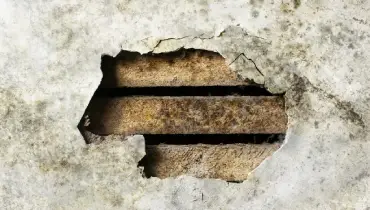
According to Rainbow Restoration, mold can grow on plaster walls under the right conditions, posing health and structural risks.
|
Think mold can’t grow on plaster? Think again. Yes, mold can grow on plaster. Just like other types of building materials, plaster that has been painted, is dirty, or has been damaged is prime for mold growth. If you find mold growth on your plaster walls, what can you do about it? Read on to learn about mold remediation and prevention for plaster walls.
Why is Mold on Plaster Walls a Problem?
Mold growth of any kind may pose a danger to your home and the health of your household. Mold exposure is associated with several negative health outcomes including respiratory problems, asthma, cold and flu-like symptoms, and more. Some people may be more susceptible to the health problems caused by mold including the very young, very old, and those with weakened immune systems.
Further, mold on plaster or any other surface is an indication of structural degradation. Surface mold is often a sign of underlying plumbing or drainage problems. While you may see the mold, you may not be able to see the extent of the damage.
Anytime mold is discovered on plaster, stucco, drywall, carpeting, or other flooring, it’s important to have the mold professionally remediated for the health and safety of your home.
How to Kill Mold on Plaster Walls
Mold remediation is a job for home restoration professionals. DIY attempts to “kill” or “clean” mold are unlikely to remediate the damage and may even result in spreading mold spores further throughout the property.
If you discover mold on your home’s plaster walls, we recommend you:
- If possible, close the room where the mold is located to protect pets, children, and other members of your household.
- Contact your local Rainbow Restoration to begin the mold remediation process.
- Contact your insurance agency to determine if mold remediation is covered under your policy.
Your local Rainbow Restoration will set up an appointment as soon as possible to investigate the mold and begin the remediation process. The steps toward full remediation will depend on the type and extent of the damage.
Prevent Mold Growth on Plaster and Other Surfaces
Mold is pervasive in buildings, and it grows in places with a lot of moisture, such as structures with leaks in the roof, windows, or ceilings. Mold loves porous objects like wood products, cardboard, ceiling tiles, and plaster. It enters the home through open doorways, vents, and HVAC systems.
Here are four ways to prevent mold growth:
- Control humidity levels – Keep levels as low as possible. The target is 30-50%. Also, use an air conditioner or dehumidifier during humid months.
- Fix leaks – Mold survives on moisture. Ensure all parts of your home are watertight – indoors and outdoors to prevent future mold growth.
- Deep clean after flooding – It’s imperative that you thoroughly dry and clean areas after a flood.
- Paint or stain all porous surfaces with a mold-resistant compound.
- Keep damp areas (kitchen, bathrooms, laundry room) well-ventilated.
Choose Rainbow Restoration Mold Remediation Services
Mold remediation should always be conducted by a professional. Even a small amount of mold on plaster or other surfaces may indicate a big problem. If you need mold remediation services at your home or business, choose Rainbow Restoration. To learn more about residential mold abatement as well as our commercial mold abatement services, request an appointment online or call us to get started.
